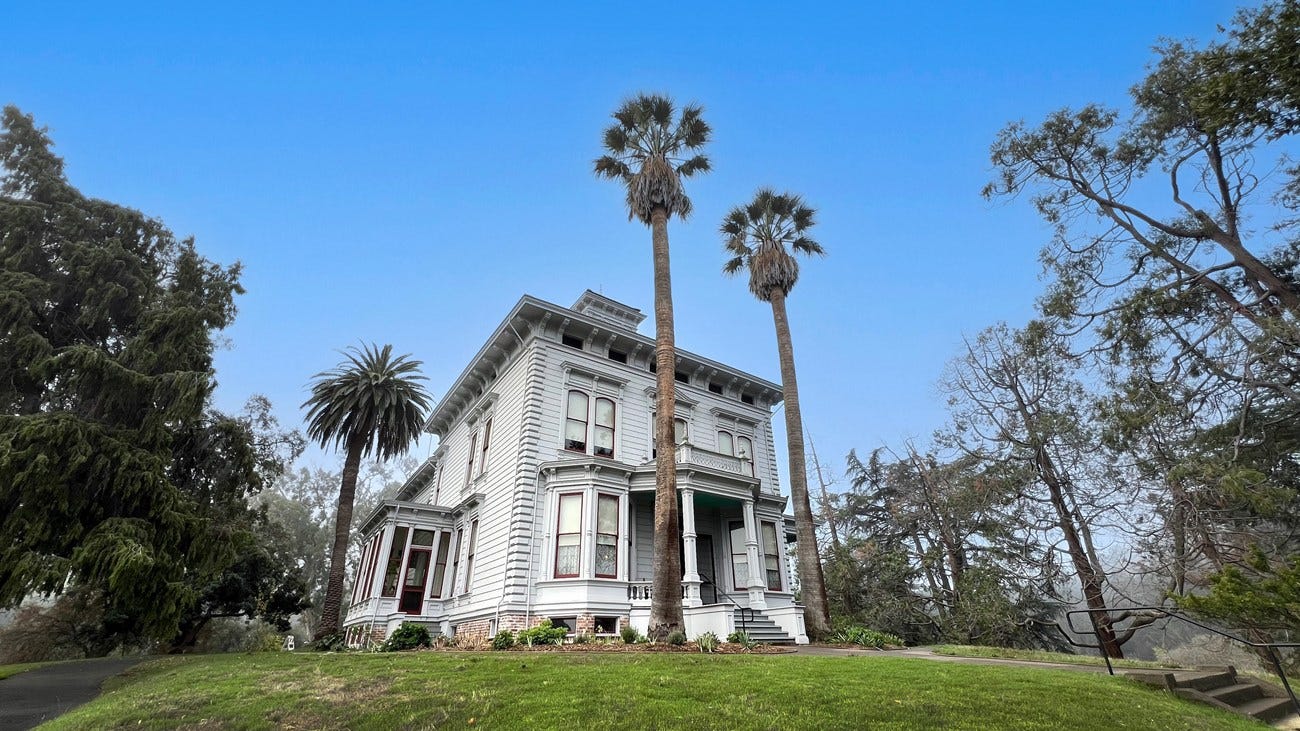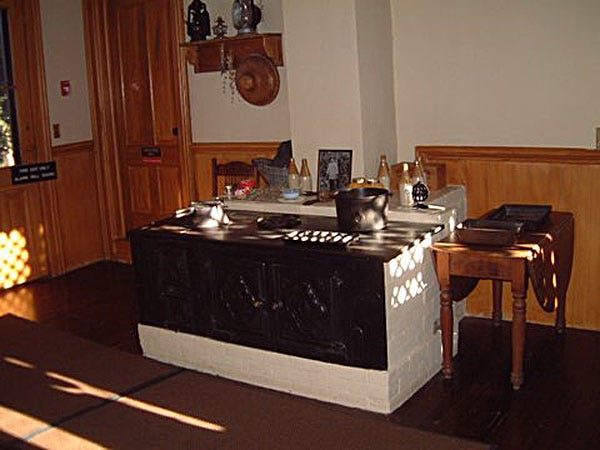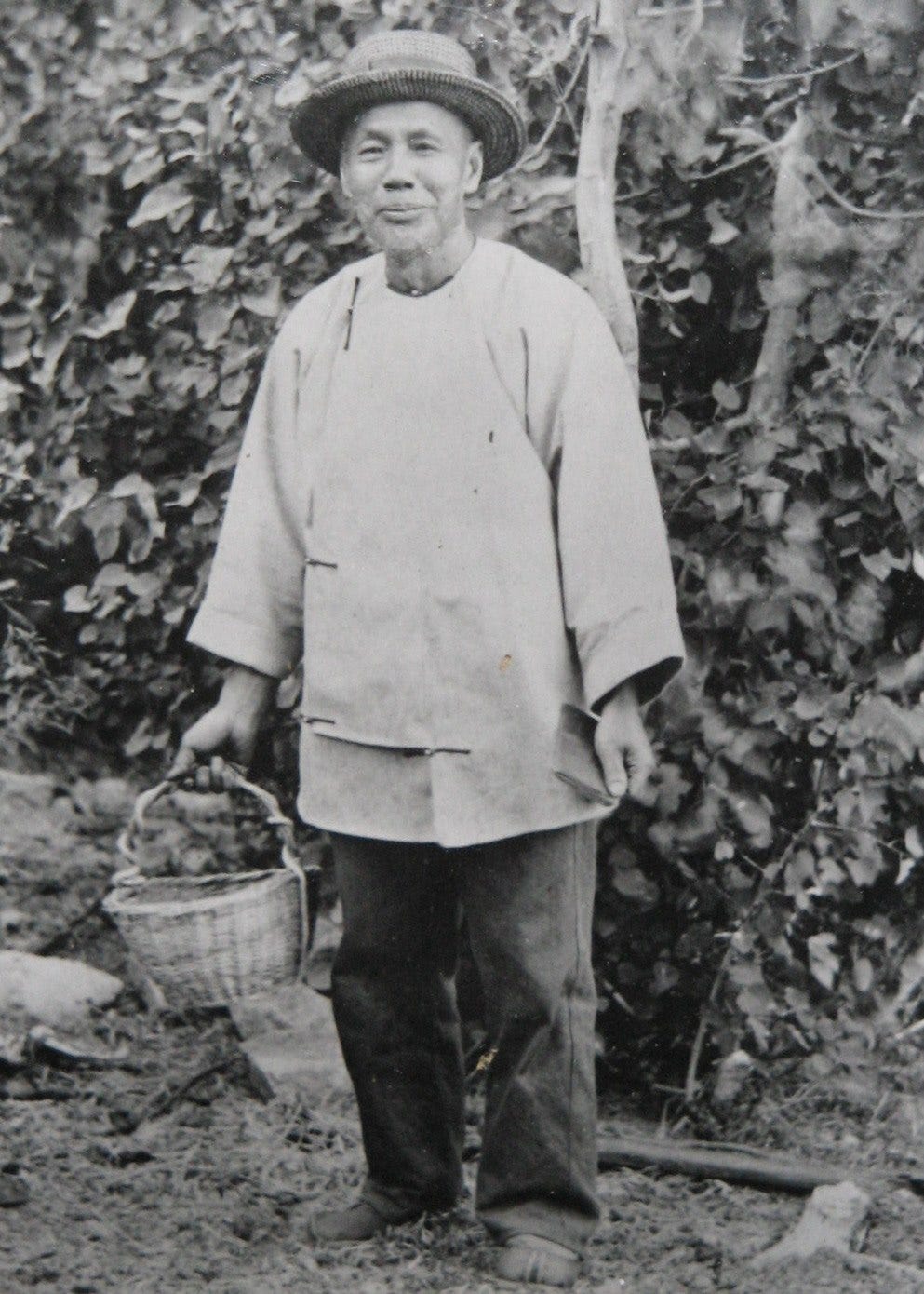I cannot stop thinking about John Muir's Chinese cook.
"Everyone got rich during the Gold Rush, except for the Chinese."
If you’re new to Every Tiny Thought, Welcome!
I write about growing up in China and finding home in the U.S., stories that bring me joy, make me think, move me to tears, and the tiny thoughts I have to share with the world. Everything is free for now, and you can sign up here:
If you’ve been here before, I appreciate you for sticking around!
When I stepped inside the Victorian house that John Muir inherited from his wealthy in-laws during our visit to the John Muir National Historic Site this past weekend, I was not prepared to learn that Muir, “ Father of the National Park Service”, had a live-in Chinese cook for seventeen years.

The guided tour started in the living room, before the volunteer tour guide, Rick, led us into the kitchen. I noticed a black-and-white photograph by the stove, without any descriptive text. The person in this photo is Asian, oddly standing out from all the other Caucasians featured in the other photographs displayed throughout the house. In this photograph, a man is standing with a tree behind him and holding a basket, half smiling toward the camera.

After pointing out the original coal stove in the kitchen, Rick grabbed the black-and-white photograph and started talking. “This is the Chinese cook for the Muir family for seventeen years, from 1897 until John Muir died in 1914. He ruled this kitchen and fed the Muir family for seventeen years. Nobody knows where he came from, what his real name was, except “Ah Fong”, and no one knows where he went after Muir passed away.”

I could already guess “Ah-Fong” was from southern China, and most likely Canton, from the history of Chinese migrants in California from Canton during the Gold Rush, and his nickname. Many places in Southern China, including where I grew up, have the practice of adding “Ah” (阿) in front of a character that’s part of someone’s name as an endearing way of addressing them to signal closeness and familiarity.
For example, my mom’s family calls her “Ah-Hong” because the last character of her name is pronounced as “Hong“ in our dialect. One of my mom’s cousins is called “Ah-Mei (阿妹)”, because she is the youngest sibling of three, and Mei(妹) means younger sister, thus the nickname. Knowing all that, the stranger in the photo didn’t feel like that distant anymore. He is just Ah Fong. We shared a Chinese sub-culture that transcended time.
“Do you think he cooked Chinese food for the Muir family?” I asked.
Rick laughed, “I think he most likely cooked anything but Chinese food.”
His answer only raised more questions that I knew he wouldn’t be able to answer.
Did he try to introduce Chinese food at all to the Muir family? As a servant, he certainly did not sit at the same dining table and eat with the Muir family. What did he eat then after cooking and feeding the family? Did he miss Cantonese food? Was he able to cook anything different just for himself, and maybe the other Chinese laborers who worked in the Muir fruit farm? What did he do in his free time? Did he have any free time?
John Muir is celebrated for writing about the wilderness and his conservationist effort to protect some of the most magnificent public lands that later became beloved national parks. He has also been called out for his racist views of Black, Native American, and Chinese people in his writing. I wondered what Muir thought about Ah Fong, or if Ah-Fong changed his view at all towards Chinese people.
Here is one that is displayed on the fruit farm outside the Muir mansion (I apologize for the reflection in the photo):
Texts from the photo:
John Muir had complicated thoughts about race, particularly Chinese people. During his World Tour in 1903, he wrote about the Chinese:
“Some of the best people in the world are Chinese, and we must not hate them. Hatred of any race of human beings is both foolish and wicked. We should live in Christian sympathy and charity with our Chinese neighbors while living reasonably and naturally apart from them. Birds of a feather flock together, and it is right that we should thus flock together with nations, even with those that at first may be a little differently spotted and speckled from our own, like the Irish and even Japanese. But we should not try to flock together too closely with the Chinese, for they are birds with feathers so unlike our own they seem to have been hatched on some other planet. America can make Americans out of almost any people, but Chinese though…”
Inside this restored luxurious Victorian mansion, everyone who played a role in John Muir’s life had a full name, a biography, and their history displayed in the house and the NPS website, except for Ah Fong.
According to the Sierra Club’s exhibit, Ah Fong not only worked in the kitchen, but also labored in the fields, picking fruits to serve the Muir family and guests, and was also the sole companion and likely the direct caregiver during Muir’s later years after Muir’s wife had died and his adult daughters married and moved away.
He seemed so close to the family and important during Muir’s final years. How could nobody know where he went after Muir passed away? Did he have a family back home? An internet search did not turn up any more information other than the one-page information on the Sierra Club’s website under “Influential People in John Muir's Life.”
As one of the signs on the fruit farm outside the mansion explains, many Chinese workers who worked on Muir’s fruit farm slept in the makeshift shack (that no longer exists today) near the stream that runs through the farm. Along with them, Ah Fong was just one of the many Chinese migrants who initially came to California for the Gold Rush but were forced out of mining, due to California’s legislature imposing a monthly tax on non-American miners and laborers.
On our way out, Rick sensed our group’s particular interest in Ah Fong, and left us with his final comment: “Pretty much everyone got rich during the Gold Rush, except for the Chinese.”
I was in a jovial mood that day. It was finally sunny in Northern California after weeks of cold weather and rain, and we were out and about with friends that we hadn’t seen in a few months. Yet, a wave of profound sadness overtook me for the rest of the tour. I could not stop thinking about Ah Fong, and the many more Chinese immigrants who built and fed California since the Gold Rush, whose stories were buried in history.
If you enjoyed reading this piece, you can support my writing by buying me a coffee. Every little bit of encouragement means the world and helps keep the words flowing.
Related Reading:
This Week’s Tiny Thoughts
The Sunday Story: A Song for Grief in China, from NPR’s Up First, tells the story of a man who plays piano in public, repeating just one song, over and over again, to express his grief and loss. Music speaks volumes.
Trevor Noah’s new podcast, What Now? with Trevor Noah, is my new favorite thing to listen to. I like his stand-up comedies, but I love this podcast where his natural sense of humor shines through in his conversations with his equally very funny friends.
If you are new, here are a few places to check out:



I was the intern who conducted research for JMNHS about the history of John Muir's relationship with the Chinese laborers on his ranch. So glad people are now learning a more nuanced history of Chinese migrants in Martinez. Happy to chat more about this if you're interested! I still have the original research document and tons of photos from the research...
Ah Heng here! :) I believe ah- is also used in the Fujian area, I am a mixed of both Cantonese and Hokkien, and my hometown is full of both these clans. We are all called ah-something (if we aren't called by our English names, remnants of our British colonial past. I'm from Malaysia).
But yes, I also feel for Ah-Fong. I hope he had a serene and happy life after retiring from serving Muir!